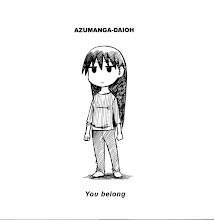City of Lights (ひかりのまち) is a single volume dark slice of life manga by Asano Inio. It was originally published between 2004 and 2005.
The City of Light is a recent development project in a non-descriptive Japanese town. Beautiful high rise apartments and fancy shopping arcades designed to be enclaves for the up and coming middle class families. Behind the modernity and bounty there exist darkness and regret. While things may seem pleasant and cheerful humans can never get away from their problems.
The story follows a few loosely tied characters in their troubles relating to the City of Light. The first real character is a middle school boy who struggles with his father, a disgraced police officer. In an effort to help an older girl he likes he puts his own life at risk. Another story follows a street thug with dreams of restoring the neighborhood of his youth to the quaint glory he remembers before the yuppie developments. In another, a preschool boy is haunted by the desires and regrets of a man who died too soon.
As with other manga by Asano, the artwork is impeccable in its level of detail and realism and full of his signature character designs. The stories are interesting and the way they weave together reminded me of Pulp Fiction, but this one would be the weakest of his works I have read. While they are vignettes of different denizens of the town they didn't flow as enjoyably as I would have liked, causing the narrative to be disjointed. The best arc would be the one dealing with two men, unrelated, who are stuck raising a small girl that is one of their biological daughters...but they don't know who's. It was a story about the power of responsibility while being able to compensate for lack of intellect.
The prelude chapter appears to be more of an anecdotal homage to Asano's inspiration to write this particular manga and was my favorite part in the collection. If the entire series would have been closer to the style of the prelude it would have been more enjoyable. At times the dialogue became too obtuse and introspective, particularly the arc with the preschool boy. That was countered by the way the boys story slips into a lucid state of astral consciousness. At the end of the day this was still better than many other manga titles I have read. It felt closer to the delivery and tone of Girl on the Shore than Solanin though, so as with most of his work, prepare for darkness and misery.
This manga though is currently unavailable commercially in English.
The City of Light is a recent development project in a non-descriptive Japanese town. Beautiful high rise apartments and fancy shopping arcades designed to be enclaves for the up and coming middle class families. Behind the modernity and bounty there exist darkness and regret. While things may seem pleasant and cheerful humans can never get away from their problems.
The story follows a few loosely tied characters in their troubles relating to the City of Light. The first real character is a middle school boy who struggles with his father, a disgraced police officer. In an effort to help an older girl he likes he puts his own life at risk. Another story follows a street thug with dreams of restoring the neighborhood of his youth to the quaint glory he remembers before the yuppie developments. In another, a preschool boy is haunted by the desires and regrets of a man who died too soon.
As with other manga by Asano, the artwork is impeccable in its level of detail and realism and full of his signature character designs. The stories are interesting and the way they weave together reminded me of Pulp Fiction, but this one would be the weakest of his works I have read. While they are vignettes of different denizens of the town they didn't flow as enjoyably as I would have liked, causing the narrative to be disjointed. The best arc would be the one dealing with two men, unrelated, who are stuck raising a small girl that is one of their biological daughters...but they don't know who's. It was a story about the power of responsibility while being able to compensate for lack of intellect.
The prelude chapter appears to be more of an anecdotal homage to Asano's inspiration to write this particular manga and was my favorite part in the collection. If the entire series would have been closer to the style of the prelude it would have been more enjoyable. At times the dialogue became too obtuse and introspective, particularly the arc with the preschool boy. That was countered by the way the boys story slips into a lucid state of astral consciousness. At the end of the day this was still better than many other manga titles I have read. It felt closer to the delivery and tone of Girl on the Shore than Solanin though, so as with most of his work, prepare for darkness and misery.
This manga though is currently unavailable commercially in English.








No comments:
Post a Comment